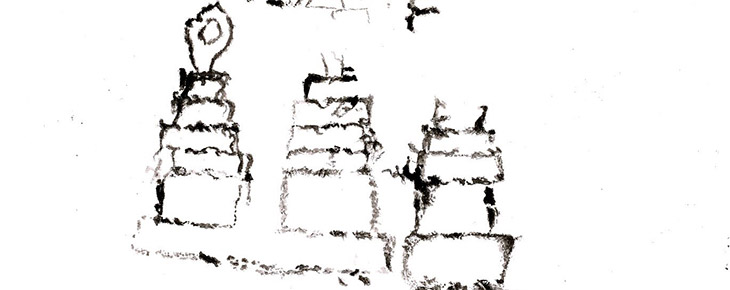
December 2017
John Vincent Bellezza
Introduction to the stepped shrine rock art of Upper Tibet
Please note that the book under this title is no longer available on the Tibetan Archaeology website. It was freely circulated here for a more than a year. The manuscript is now being revised for publication under contract with British Archaeological Reports International Series, Oxford, UK. Publication is scheduled for 2020. It will appear under the following title:
Drawn and Written in Stone: An Inventory of Stepped Shrines and Early Rock Inscriptions in Upper Tibet (ca. 100 BCE to 1400 CE)
Approximately 100,000 words, 240 b&w drawings, 500 color photographs, four maps
This monograph comprehensively catalogues ancient rock inscriptions and stepped shrine carvings in uppermost Tibet. Spanning the protohistoric and early historic periods, these writings and figures on stone furnish an unparalleled view of the transition between the preliterate and literate stages of cultural development on the Tibetan Plateau.
Synopsis
The book examines ancient inscriptions and stepped shrines carved on natural stone surfaces in Upper Tibet (Stod and Byang-thang). These rock inscriptions (ca. 700–1400 CE) and petroglyphs (100 BCE to 1400 CE) furnish a unique insight into the cultural and religious progress of Tibet during the crucial transition from preliteracy to literacy. Using the large body of evidence adduced, the work further examines the subsequent supplanting of bon traditions by Buddhism. After introducing the reader to the historical and anthropological background of Upper Tibet, it places the inscriptions and stepped shrines within the larger methodological and theoretical ambit of epigraphic and rock at studies in Central Asia. It investigates the evolution of stepped shrines from elementary forms associated with archaic religious traditions to complex Buddhist representations. The role played by rock inscriptions in the development of the Tibetan system of writing is another major focus of the book. The two catalogues accompanying the work contain colour photographs of 550 epigraphs and 230 stepped shrines documented between 1995 and 2013. Transliterations, translations and grammatical notes for each inscription and black and white drawings of each stepped shrine are also supplied.